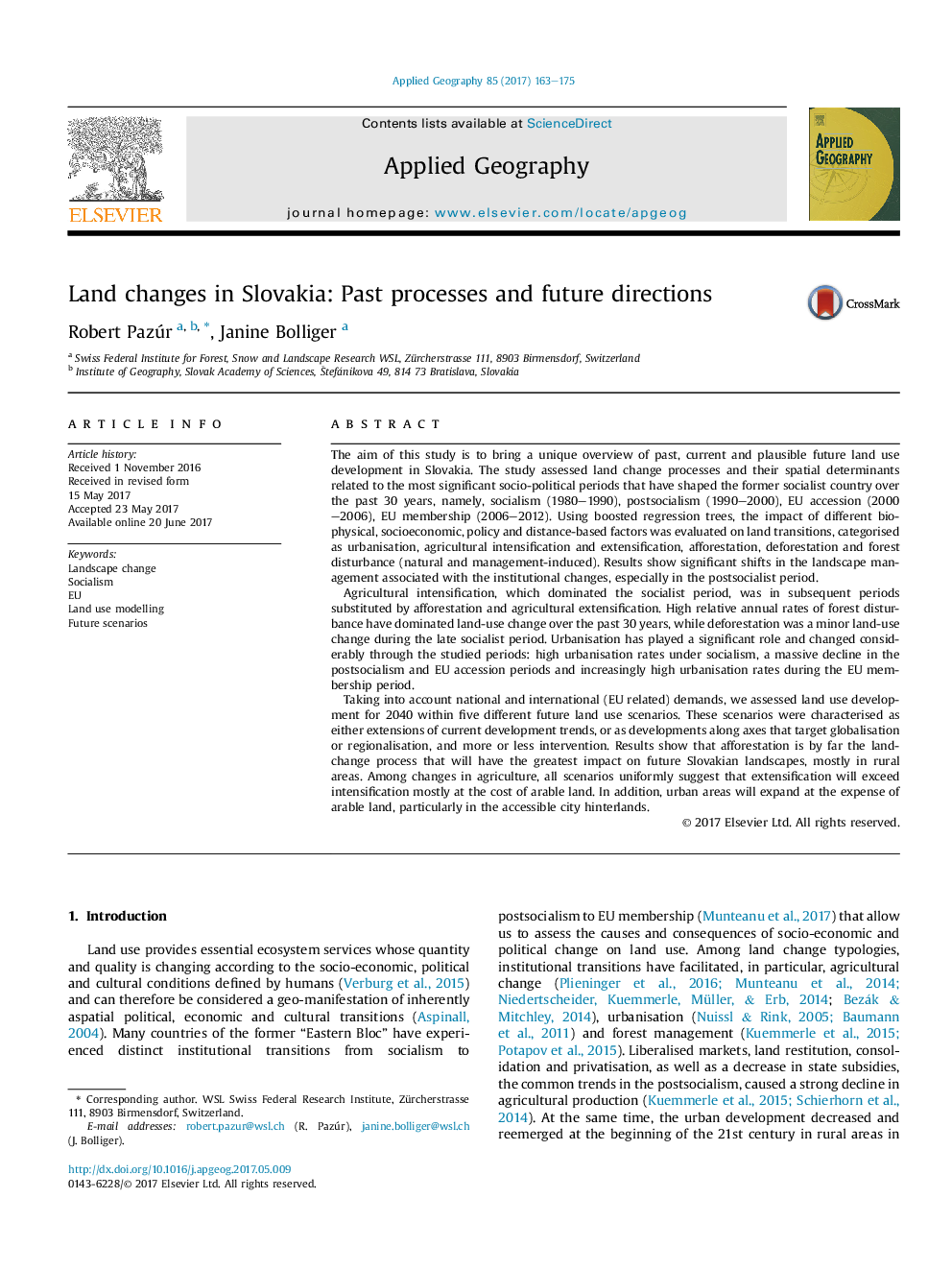| کد مقاله | کد نشریه | سال انتشار | مقاله انگلیسی | نسخه تمام متن |
|---|---|---|---|---|
| 6458271 | 1421032 | 2017 | 13 صفحه PDF | دانلود رایگان |
- Past and future land changes in Slovakia were analysed within modelling frameworks.
- We found a relationship between institutional changes and land change.
- Areas under agricultural production dominate the land change.
- Influence of determinants of land change varies according to the process and period.
- Accessibility and proximity-based factors strongly influence past and future land change.
The aim of this study is to bring a unique overview of past, current and plausible future land use development in Slovakia. The study assessed land change processes and their spatial determinants related to the most significant socio-political periods that have shaped the former socialist country over the past 30 years, namely, socialism (1980-1990), postsocialism (1990-2000), EU accession (2000-2006), EU membership (2006-2012). Using boosted regression trees, the impact of different biophysical, socioeconomic, policy and distance-based factors was evaluated on land transitions, categorised as urbanisation, agricultural intensification and extensification, afforestation, deforestation and forest disturbance (natural and management-induced). Results show significant shifts in the landscape management associated with the institutional changes, especially in the postsocialist period.Agricultural intensification, which dominated the socialist period, was in subsequent periods substituted by afforestation and agricultural extensification. High relative annual rates of forest disturbance have dominated land-use change over the past 30 years, while deforestation was a minor land-use change during the late socialist period. Urbanisation has played a significant role and changed considerably through the studied periods: high urbanisation rates under socialism, a massive decline in the postsocialism and EU accession periods and increasingly high urbanisation rates during the EU membership period.Taking into account national and international (EU related) demands, we assessed land use development for 2040 within five different future land use scenarios. These scenarios were characterised as either extensions of current development trends, or as developments along axes that target globalisation or regionalisation, and more or less intervention. Results show that afforestation is by far the land-change process that will have the greatest impact on future Slovakian landscapes, mostly in rural areas. Among changes in agriculture, all scenarios uniformly suggest that extensification will exceed intensification mostly at the cost of arable land. In addition, urban areas will expand at the expense of arable land, particularly in the accessible city hinterlands.
Journal: Applied Geography - Volume 85, August 2017, Pages 163-175
